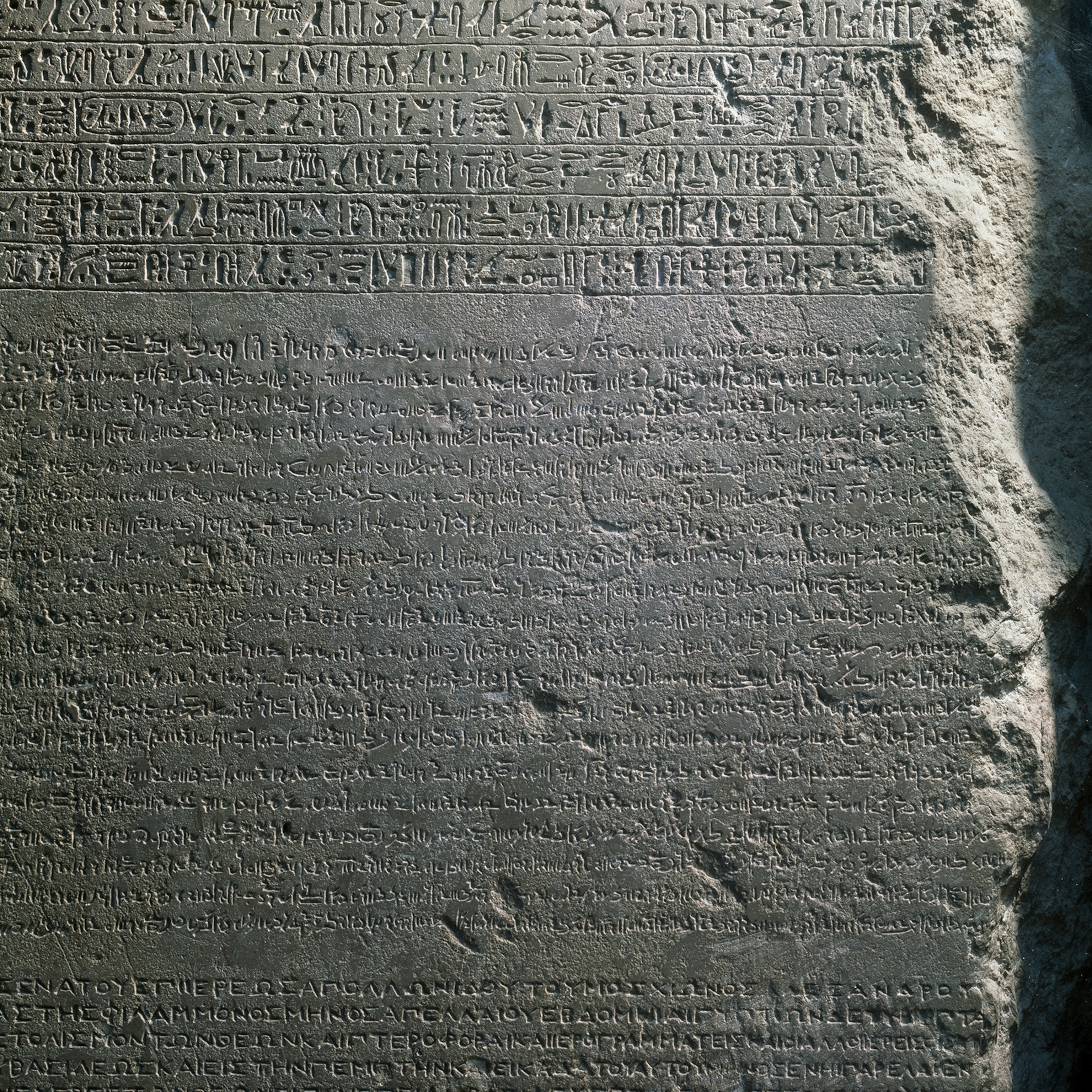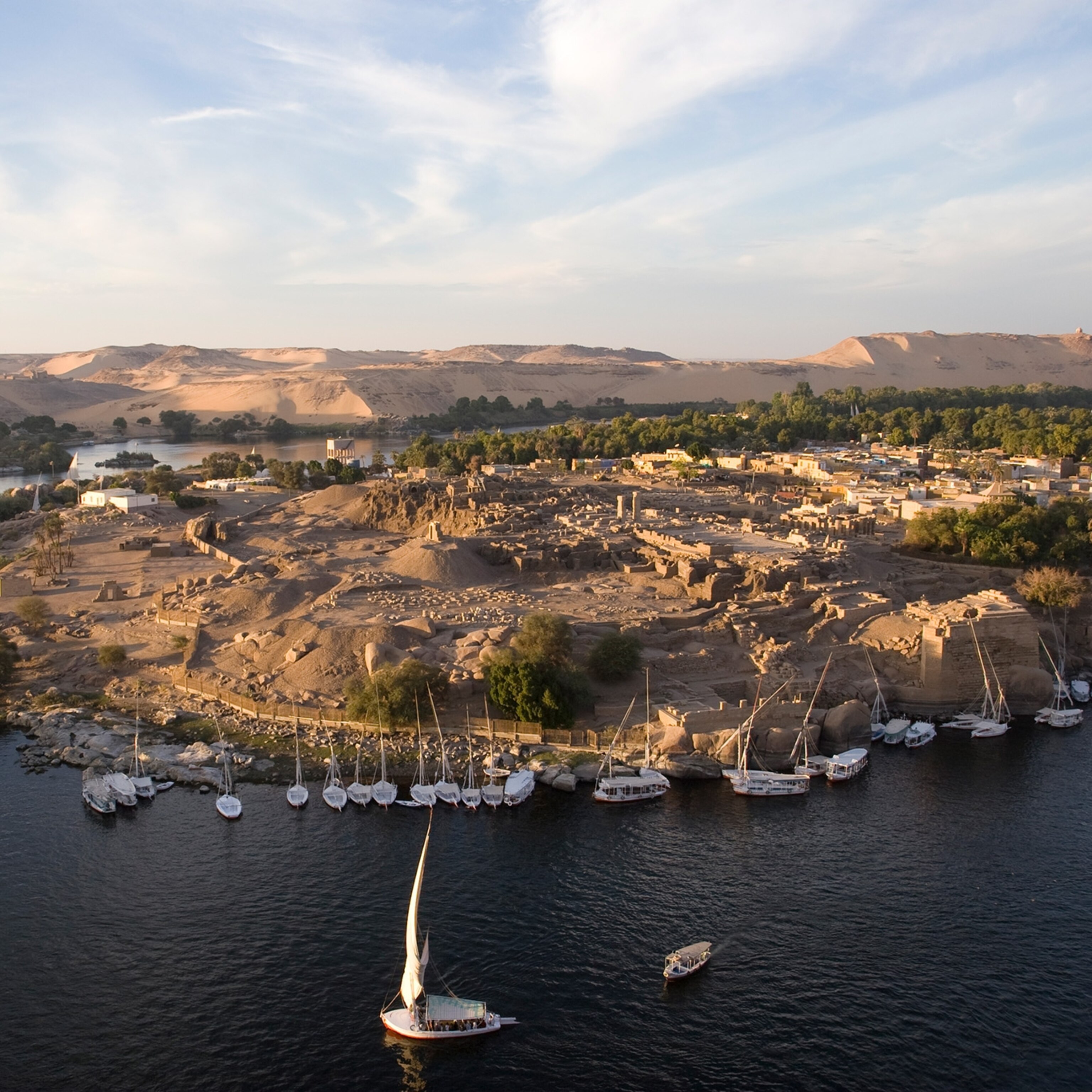About 4,200 years ago, a catastrophic worldwide drought caused the collapse of societies all over the globe. That’s an archaeological theory linked with the newest division of geological time, dubbed the Meghalayan Age.
But in a new article in Science, Guy Middleton, a senior researcher at the Czech Institute of Egyptology at Charles University, throws cold water on the concept. According to Middleton, the new age isn’t all it’s cracked up to be. Here’s what you need to know.
What’s the Meghalayan Age?
If the name doesn’t ring a bell, it’s no surprise: The age was only recently defined. The youngest, newest unit of the geologic time scale, it was adopted earlier this year by the International Commission on Stratigraphy (ICS), a subcommittee of the International Union of Geographic Sciences that focuses on defining the geologic time scale. With the decision, the ICS split the current geological epoch that began about 11,650 years ago—the Holocene— into three parts. The Meghalayan Age is the newest sliver of that time scale, running from 4,200 years ago until the present day.
The geologic time scale is reflected in in layers of rock, or geologic strata. After years of debate, geologists adopted the Meghalayan Age based on evidence of a climatic event occurring 4,200 years ago. The best evidence of the event—a sudden, global megadrought, (a drought that lasts two decades or longer)—can be found in chemical signatures in a stalagmite in a cave in the Indian state of Meghalaya; hence the name.
How did the megadrought affect humans?
The drought significantly impacted civilizations all over the world, says archaeologist Harvey Weiss, a professor of Near Eastern Civilizations in Yale University’s anthropology department and an author of the 2012 ICS paper that initially proposed the establishment of the Meghalayan Age. “The megadrought had profound societal effects,” says Weiss. Cities and towns were abandoned, and people transitioned from urban to rural societies.
Some of the civilizations Weiss says were severely impacted by the megadrought include Egypt’s Old Kingdom and the Akkadian Empire in Mesopotamia, which both collapsed, as well as the Indus Valley of modern-day Pakistan and India, where large cities like Mohenjo Daro and Harappa were abandoned around this time.
Did it really have that big of an effect?
Middleton doesn’t think so. In his reading of the archaeological evidence, societal collapses happened at different times, rendering the argument that a single, global climate event precipitated them moot. “I don’t think you have a real regional picture," he says.
In Egypt, the “collapse” of the Old Kingdom was really a slow fragmenting of centralized power, Middleton writes in his Science article. In the Indus Valley, he claims, the society did move away from urban centers, but only over a long period of time.
“The idea that the collapse of a society can be put down to one simple reason ignores people’s agency,” he says. Middleton doesn’t even like the term. “’Collapse’ is a bit of a weasel term,” he explains. “Things aren’t usually as simple as climate change equals collapse.” More often, Middleton says, societies would have reorganized.
Middleton also casts doubt on the dates relied on by the working group, noting that societies like the Akkadian Empire, whose capital has never been located, cannot be precisely dated, and therefore may have occurred during the drought itself.
What do the researchers agree on?
The only point of agreement between Weiss and Middleton seems to be the resilience that causes humans to regroup—whether they do so in response to a societal collapse or not. For Weiss, societal collapses were accompanied by a scramble away from drought and toward self-reinvention. And what Middleton sees as societal reorganizations, not collapses, were driven by human resilience, not “ancient apocalypse.”
Both men insist that their views are widely accepted. “The editors at the journal Science, strangely enough, think this is ‘scientific controversy,’” says Weiss.
“From where I sit,” says Middleton, “my views are not really controversial at all.”
Why was the megadrought selected to mark the beginning of the Meghalayan Age, anyway?
Eric Cline, an archaeologist at George Washington University, has the same question. “Why this megadrought?” he asks. “We have other megadroughts.” He points to another massive drought that occurred in 1200 B.C., leading to the collapse of Late Bronze Age civilizations throughout Egypt, the Aegean, and the Near East. Why not choose that drought instead? His concerns are echoed by Middleton. “What’s the point of it?” he asks.
But when the ICS made its announcement this summer, its answer was clear: researchers believed that the megadrought had significant impact on societies across the globe. Or so they said at the time, in a press release that laid out the division and declared that the Meghalayan Age was defined by the “collapse of civilizations worldwide.” The announcement closely linked geology and archaeology, ICS representatives said.
How does the International Committee for Stratigraphy respond to the claims?
Now, though, they’ve changed their tune.
“There was an inaccurate press release sent out, which has given people the impression that the Holocene division was conditioned on archaeological events,” says Philip Gibbard, the group’s secretary-general. “That’s not the case and never was.”
Gibbard, who says he’s taken steps to remove the release, says the Meghalayan Age has nothing to do with archaeology. “The divisions of the Holocene are based on purely climatic events,” he says. “If there is an archaeological correspondence to the event, that just adds to the strength of what we have done. It’s a side issue as far as we’re concerned. We are not archaeologists, you know.”
Well, kind of. At least two archaeologists, including Weiss, were part of the ICS working group in charge of the subdivision. In 2012, the group put out a discussion paper in the Journal of Quaternary Science. It uses archaeological evidence, including “cultural upheaval in North Africa, the Middle East, and Asia” in part to justify the division.
“The fact that the [megadrought] is manifest in a range of geomorphological, stratigraphical, and archaeological records from many parts of the world means that it constitutes an appropriate temporal marker,” the team wrote.
Does the inaccuracy of the press release change Middleton’s perspective? “What they’re trying to do is undermine the purpose of my article by retracting their public release,” Middleton claims. And no matter what gets decided by the ICS, he adds, “I completely stand by the idea that this global collapse didn’t really happen.”
Related Topics
You May Also Like
Go Further
Animals
- This ‘saber-toothed’ salmon wasn’t quite what we thoughtThis ‘saber-toothed’ salmon wasn’t quite what we thought
- Why this rhino-zebra friendship makes perfect senseWhy this rhino-zebra friendship makes perfect sense
- When did bioluminescence evolve? It’s older than we thought.When did bioluminescence evolve? It’s older than we thought.
- Soy, skim … spider. Are any of these technically milk?Soy, skim … spider. Are any of these technically milk?
- This pristine piece of the Amazon shows nature’s resilienceThis pristine piece of the Amazon shows nature’s resilience
Environment
- This pristine piece of the Amazon shows nature’s resilienceThis pristine piece of the Amazon shows nature’s resilience
- Listen to 30 years of climate change transformed into haunting musicListen to 30 years of climate change transformed into haunting music
- This ancient society tried to stop El Niño—with child sacrificeThis ancient society tried to stop El Niño—with child sacrifice
- U.S. plans to clean its drinking water. What does that mean?U.S. plans to clean its drinking water. What does that mean?
History & Culture
- Séances at the White House? Why these first ladies turned to the occultSéances at the White House? Why these first ladies turned to the occult
- Gambling is everywhere now. When is that a problem?Gambling is everywhere now. When is that a problem?
- Beauty is pain—at least it was in 17th-century SpainBeauty is pain—at least it was in 17th-century Spain
- The real spies who inspired ‘The Ministry of Ungentlemanly Warfare’The real spies who inspired ‘The Ministry of Ungentlemanly Warfare’
- Heard of Zoroastrianism? The religion still has fervent followersHeard of Zoroastrianism? The religion still has fervent followers
Science
- Here's how astronomers found one of the rarest phenomenons in spaceHere's how astronomers found one of the rarest phenomenons in space
- Not an extrovert or introvert? There’s a word for that.Not an extrovert or introvert? There’s a word for that.
- NASA has a plan to clean up space junk—but is going green enough?NASA has a plan to clean up space junk—but is going green enough?
- Soy, skim … spider. Are any of these technically milk?Soy, skim … spider. Are any of these technically milk?
- Can aspirin help protect against colorectal cancers?Can aspirin help protect against colorectal cancers?
Travel
- What it's like to hike the Camino del Mayab in MexicoWhat it's like to hike the Camino del Mayab in Mexico
- Is this small English town Yorkshire's culinary capital?Is this small English town Yorkshire's culinary capital?
- Follow in the footsteps of Robin Hood in Sherwood ForestFollow in the footsteps of Robin Hood in Sherwood Forest
- This chef is taking Indian cuisine in a bold new directionThis chef is taking Indian cuisine in a bold new direction








